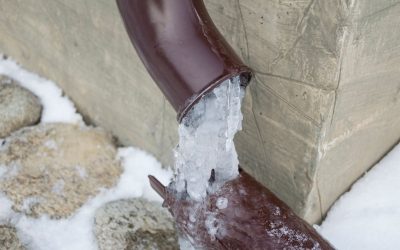PEX piping has become very popular over the decades. It is widely used in commercial and residential plumbing systems because of its durability and ease of installation. PEX piping is also known for being resistant to corrosion and potential damage.
The popularity of PEX piping has increased significantly over the last decade. In fact, according to the National Association of Plumbing & Mechanical Officials (NAPMO), PEX piping accounts for approximately 50% of all new water supply pipe installations.
However, despite its benefits, PEX piping does have some drawbacks. For example, it can freeze at low temperatures. Fortunately, there are ways to combat this problem, including insulation and the placement of the tubing.
Frozen pipes can lead to water damage and other problems. This article will discuss how freezing occurs with PEX piping and what you can do about it.
What Are PEX Pipes?
PEX piping is a type of plastic piping that was developed by Corrugated Plastic Products Incorporated (CPPI). The company, which is now owned by PolyOne Corporation, introduced PEX piping in the 1970s.
PEX piping consists of thin-walled polyethylene tubes that are connected together using fittings. These fittings allow the pipes to be joined together and sealed. They also provide additional strength and resistance to bending.
Unlike copper or steel piping, PEX piping is flexible and easy to install. This makes it an ideal material for use in residential and commercial plumbing applications.
Do PEX Pipes Freeze?
Freezing is one of the biggest issues associated with PEX piping. When the temperature drops below 32 degrees Fahrenheit, the water expands as it freezes. As a result, the pressure inside the pipes starts to increase, which can cause them to burst.
When this happens, the water rushes out of the pipes and into your home or business. If you don’t have time to fix the issue before it causes serious damage, you may need to replace the damaged pipes and stop the leak.
In addition to this, frozen pipes can also result in flooding, which could cause structural damage to your home. If you suspect that your pipes are frozen, you should call a professional plumber immediately. Otherwise, you could risk damaging your property.
How Do I Know If My PEX Piping Is Frozen?
You can tell whether your pipes are frozen if they feel cold to the touch when you walk around your house. However, you might not notice any signs until after the pipes have been exposed to extreme cold for several hours.
If you think that your pipes are frozen but aren’t sure, you can check them yourself. You can either open up the valves on your faucets and let the water flow freely, or turn off the main valve and then test each individual fixture.
If you find that your pipes are still intact, you should wait until the weather warms up again before checking them. Once the temperature reaches above 32 degrees Fahrenheit, you’ll know that your pipes aren’t frozen anymore.
How Can I Prevent Freezing With PEX Piping?
There are a few things that you can do to prevent freezing from occurring with PEX piping. First, you should make sure that all the pipes are properly installed. If you’re unsure about where the pipes go, you should consult a professional plumber.
Second, you should avoid leaving taps running while the temperature outside is low. When the temperature is below 32 degrees Fahrenheit, you should only run the tap briefly so that you can quickly shut it off.
Third, you should keep your pipes warm during the winter months. If you live in a colder climate, you should insulate your pipes with insulation blankets. This will help to maintain heat within the pipes.
Fourth, you should drain your pipes regularly. This will ensure that there’s no moisture left behind when the pipes freeze. It’s important to remember that if you leave standing water in your pipes, they’ll start to thaw and refreeze over and over again. Eventually, this can lead to pipe bursting.
What Are The Different Types Of PEX Pipes?
PEX piping comes in two different types: rigid and flexible. Both types are made using polyethylene (PE) plastic, which is a strong, durable material. However, PEX has some drawbacks. For example, it doesn’t hold its shape well when it gets wet, which means that it won’t last very long.
Rigid PEX piping is used for commercial applications such as warehouses, factories, and restaurants. These pipes are typically more expensive than their flexible counterparts because they require special fittings and tools. In addition to this, rigid PEX piping is heavier than flexible piping.
Flexible PEX piping is usually used for residential purposes. Unlike rigid PEX piping, these pipes don’t need special fittings to connect them together. They come in various sizes and lengths, which makes them easy to install. In addition to this flexibility, flexible PEX piping is much lighter than rigid PEX piping.
When Should I Replace My PEX Pipes?
There are many reasons why you may want to replace your PEX piping. Some common problems include leaks, cracks, and damage caused by rodents. Other issues include corrosion, oxidation, and rust.
You should also consider replacing your PEX piping if it’s old and worn out. Older pipes tend to be weaker than newer ones, which means that they’re more likely to leak. In addition to this weakness, older pipes often have larger holes and cracks. This could mean that they’re leaking at an increased rate.
If you notice any signs of leakage or other problems with your PEX piping, you should contact a professional plumber immediately. A qualified plumbing technician can inspect your system and determine what needs to be done. Once he or she fixes the problem, you can rest assured knowing that your home or business will be safe and secure.
Conclusion
Pex pipes are capable of freezing in cold climates, but you can prevent this from happening. Follow the tips above to make sure that your pipes stay warm and dry all year round.








